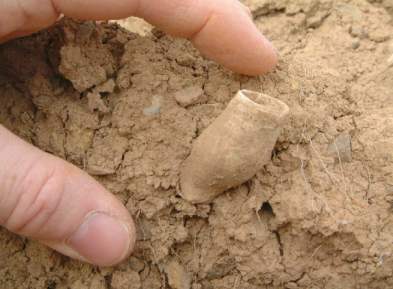
A Chance Find Sheds Light On A Long Forgotten Local Industry
For years old clay pipe stems and bowl fragments have been common finds in many of the gardens and fields around Thorpe Thewles. These relatively insignificant archaeological finds are reminders of an era prior to the advent of cigarettes but when tobacco smoking was none the less just as popular. The use of clay pipes in Britain dates back to the 1580s and continued well into the early twentieth century.

A clay pipe bowl of the 1670s being plucked from the earth.
In the earliest period of pipe smoking in Britain (prior to the 1700s) the bowls, which held the tobacco, were noticeably smaller than those found in later periods. This reflects the comparative cost of tobacco which had to be imported from the emerging plantations of the New World such as the famous ones in Virginia.
The peak of the clay pipe industry in England was between 1680 and 1720. More pipes were made during this period than at any other time (including the nineteenth century) although there was further high peak in their popularity around 1840. The peaks and troughs in pipe smoking appear to have closely followed the high points in national prosperity during the industrial revolution. In addition their use was affected by other alternative fashions such as the taking of snuff. Snuff became popular during the eighteenth century when wars flared up in Europe and with the American Colonies adversely effecting trade.
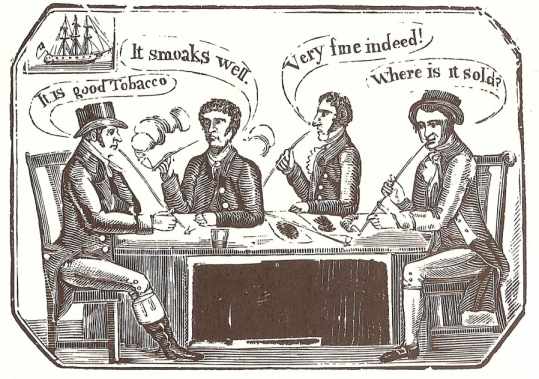
A group of gentlemen clay pipe smokers c.1800
Recently a collection of clay pipe fragments, found in gardens in front of Mill Terrace, Thorpe Thewles were dated by a specialist in the field to the period 1780 to 1820. A further clay pipe found in the floor of No.4 Mill Terrace was dated even earlier to c.1720. This particular pipe was in a style popular in London during this period but which was likely copied in other provincial cities at the time.
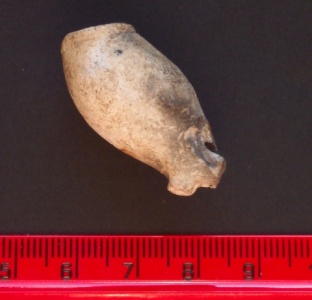 An early clay pipe bowl found in the garden of Mill Farm, Thorpe Thewles that dates to the around the period of the English Civil War (c.1630-45). |
An early eighteenth century (c.1730s) clay pipe bowl found below the floor of a house in Mill Terrace, Thorpe Thewles. |
Two particular pipe bowls within the group recently found in Thorpe Thewles were decorated in bold relief and bore the maker's name of a local family of pipe makers in Yarm. Both of these bowls are described in more detail below.
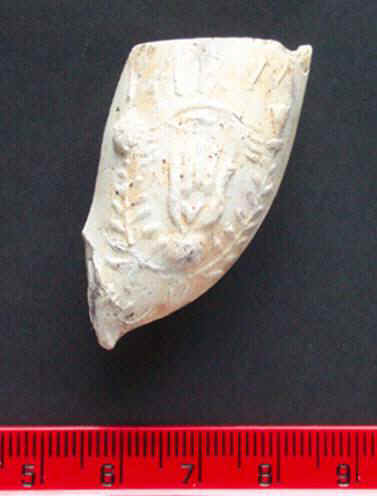 |
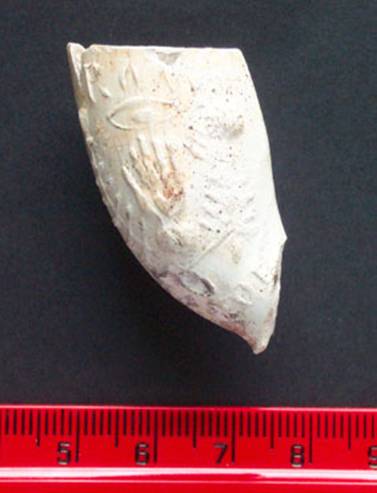 |
| Type 1 - Row of Yarm Clay Pipe Bowl from Thorpe Thewles | |
Pipe Type 1 - The design on either side of this pipe bowl depicts a heart on the palm of an open hand with an eye symbol above the fingertips and what appears to be a globe symbol below the hand. Either side of the central design are a rose and a thistle on long stems, linked at the base. Above the eye symbol around the bowl's rim are the words ROW and YARM on alternate sides. The "all seeing eye" symbol is commonly found on Masonic regalia while the image of a heart on an open palm is known to have been a contemporary symbol of fraternalism. This particular clay pipe was dated more precisely to the period 1810 to 1830. After 1800 more elaborate relief designs on pipes became common place. Those incorporating Masonic and symbols inspired by other fraternal societies, such as the Foresters and Buffalos, being particularly well represented on pipes of the period.
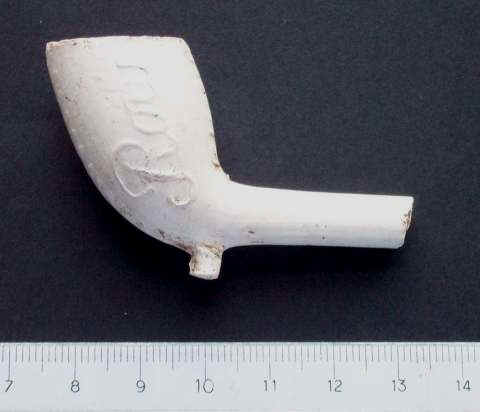 |
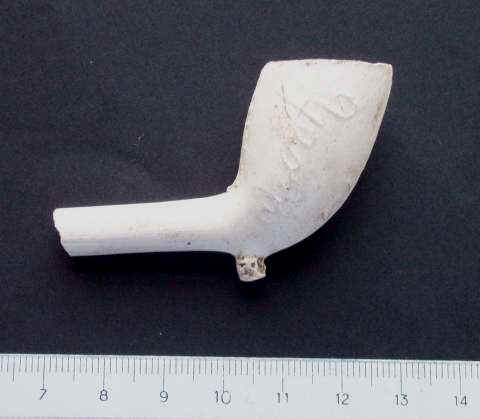 |
| Type 2 - Row of Yarm Clay Pipe Bowl from Thorpe Thewles | |
Pipe Type 2 - The design on either side of this pipe bowl is simply the raised legend ROW, on one side and YARM on the other. Along the front and back spine of the bowl are two separate laurel leaf motifs. This clay pipe has again been dated to the period 1810 to 1830.
The Row family of North Yorkshire and South County Durham are recorded as clay pipe makers at various locations between 1785 and 1868. The following family tree covers the principal members of the family who were engaged in the cottage industry;
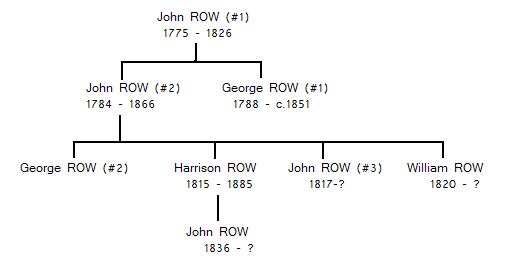
The following locations are presently known for the Row family's clay pipe making businesses:
Yarm, North Riding of
John Row (#1) 1775-1826, John Row (#2) 1815-1845, George Row 1816-1820,
Hartlepool,
John Row (#2) 1845-1856, John Row (#3) 1846-1854, George Row (#1) 1851, William
Row 1855-1865,
Cornforth Pottery, Near Coxhoe,
William Row 1850-1855,
Middlesbrough - Linthorpe, North Riding of
John Row (#3) 1855-1870
Durham
John Row (#4) 1860-1868
The field walking activities of a further local researcher working in the neighbouring village of Carlton has recently brought to light an identical clay pipe bowl to the Type 1 example found in Thorpe Thewles and described above. The intact "spur" at the base of this second pipe bowl has allowed its dating to be further confirmed.
At least two further clay pipe bowls by the Rows of Yarm are known from the records of Tees Archaeology. Both of these pipes were discovered in Yarm in 1977. They are described as follows;
1) Complete bowl with the H. ROW / YARM around the rim and decorated with enclosed flutes and foliage.
2) Acorn style bowl with the following lettering around the rim visible .ROW / Y...
The above pipes are obviously the work of Harrison Row who produced worked in Yarm between 1836 and 1855.
Acknowledgements & References:
1) I would like to thank Peter Row for providing details of the Row family and their clay pipe making activities. Peter is a direct descendant of John Row of Yarm. For further details of the Row family's clay pipe making activities and a more detailed genealogical breakdown of their family tree see Peter's excellent web site at www.gud90.dial.pipex.com/Row1.htm.
2) I am indebted to Heather Coleman for her comments on and dating of the various clay pipes discussed above.
3) I am grateful to David Parkin for providing me with details of those clay pipes that he has recorded while field walking near Carlton.
4) Pipe images are courtesy of Mrs. L. Webster, Mr. W. Allison and Miss Hannah Smith.
© Mark Smith 2006 & 2007
![]()
|Home Page |News & Publications |Local History Notes | Gallery | About the Group |Contact Us | |Links | Discussion Forum | Guest Book |